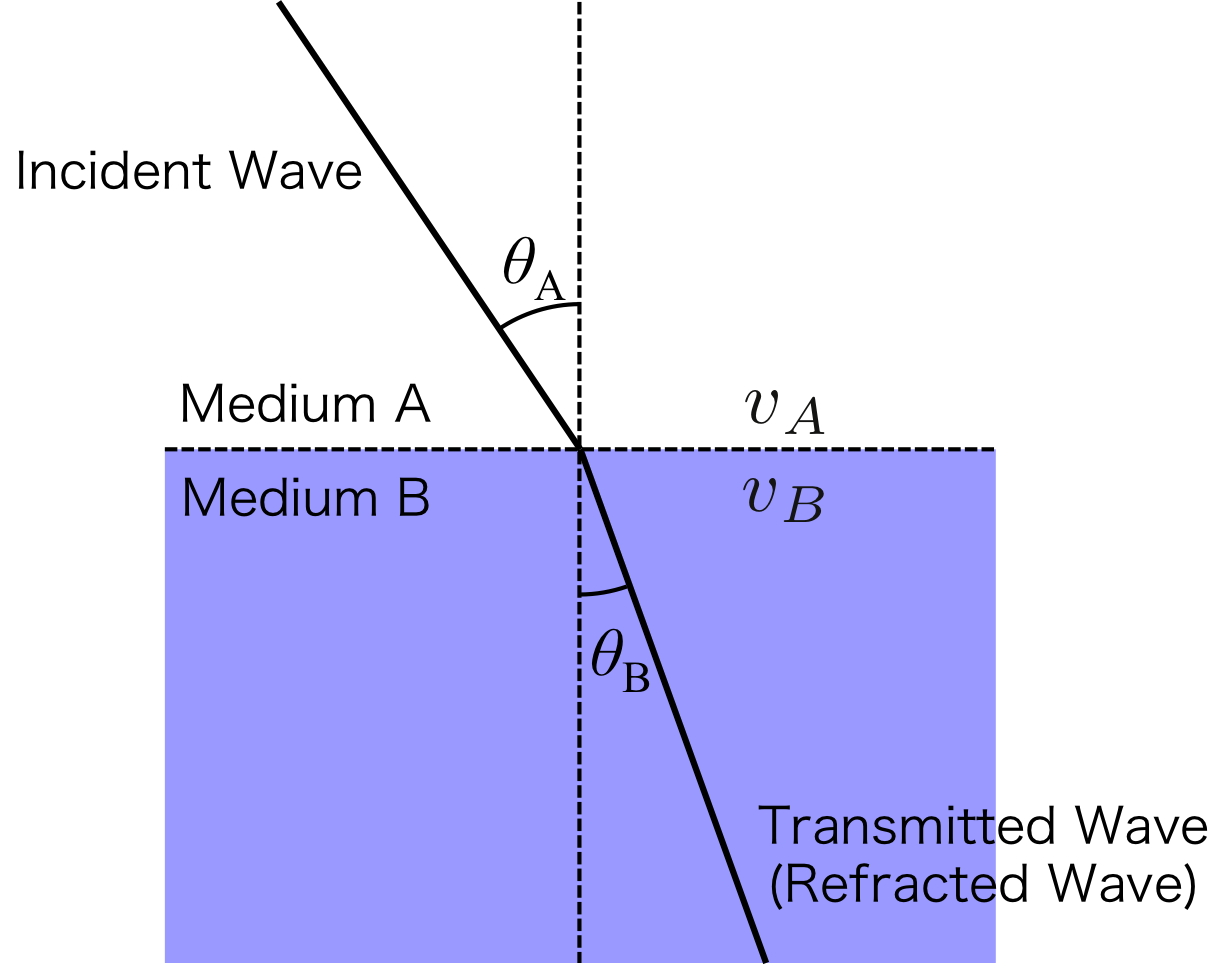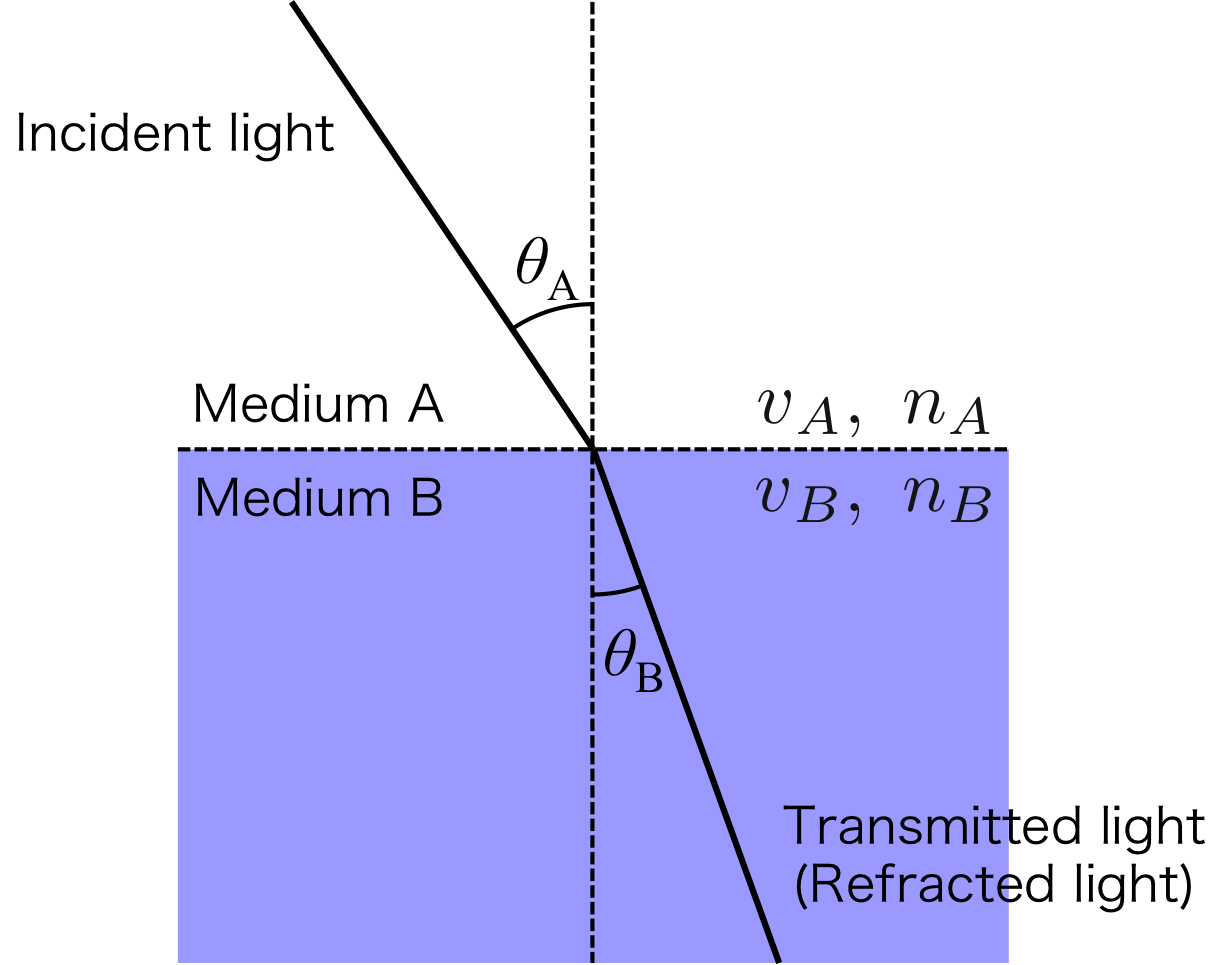English / Japanese
Snell's Law
When a wave penetrates into a different medium, the wave is refracted.
To give a simple example, when light, which is the electromagnetic wave penetrates into the water from the air, the light pass is changed.
It is for refraction that the straw appears bent at the place where it enters the water.
The refraction obeys the snell's law.
To drive the snells law, we are now considering the situation shown in Figure 1

Figure 1. Refracting wave
We assume that the wave transmits from the top left to bottom right.
In this situation, light in the medium A is called "Incident wave" and light in the medium B is called "Transmitted wave" or "Refracted wave".
An angle \( \theta_A \) between the incident wave pass and the normal vector for the boundary illustrated the dashed line is called "Incident angle".
Furthermore, The angle \( \sin \theta_B \) is called as "Refracted angle".
The relationship between \(\theta_A\), \( \theta_B\), \( v_a \), and \( v_B \) as follows,
\begin{eqnarray}
\frac{\sin \theta_A}{\sin \theta_B} = \frac{v_A}{v_B} = n_{AB}\ \ \ \ \ \ \ \ \ (1)
\end{eqnarray}
where \( v_a \), and \( v_B \) are velocities in the medium A and B, respectively and \( n_{AB} \) is the relative refractive index.
This is snell's law.
Since the frequency of a wave is not changed in each mediums, we can rewrite equation 1 as follows,
\begin{eqnarray}
\frac{\sin \theta_A}{\sin \theta_B} = \frac{\lambda_A}{\lambda_B} = \frac{v_A}{v_B} = n_{AB}\ \ \ \ \ \ \ \ \ (2)
\end{eqnarray}
where \( \lambda_A\) and \( \lambda_B \) are the wavelength of the wave in the medium A and B, respectively.
Snell's Law for Light
In a case of light, the relative refractive index between a refractive index of a medium and vacuum is defined as a "absolute refractive index"
Here, we put the \( n_A\) and \(n_B \) for absolute refractive indices for the medium A and B.
Thus, we can get the snell's law for the light as follows,
\begin{eqnarray}
\frac{\sin \theta_A}{\sin \theta_B} = \frac{\lambda_A}{\lambda_B} = \frac{v_A}{v_B} = \frac{n_B}{n_A} = n_{AB}\ \ \ \ \ \ \ \ \ (3)
\end{eqnarray}
Since the \( n_{AB} \) generally independent on the incident angle, we can rewrite equation (3) as below,
\begin{eqnarray}
n_A \sin \theta_A = n_B \sin \theta_B = Constant \ \ \ \ \ \ \ \ \ \ (4)
\end{eqnarray}

Figure 2. Refracting light
If 3 mediums pile up to 3 layers, the snell's law is expressed as
\begin{eqnarray}
n_A \sin \theta_A = n_B \sin \theta_B = n_C \sin \theta_C = Constant \ \ \ \ \ \ \ \ \ \ (5)
\end{eqnarray}
Sponsored link

